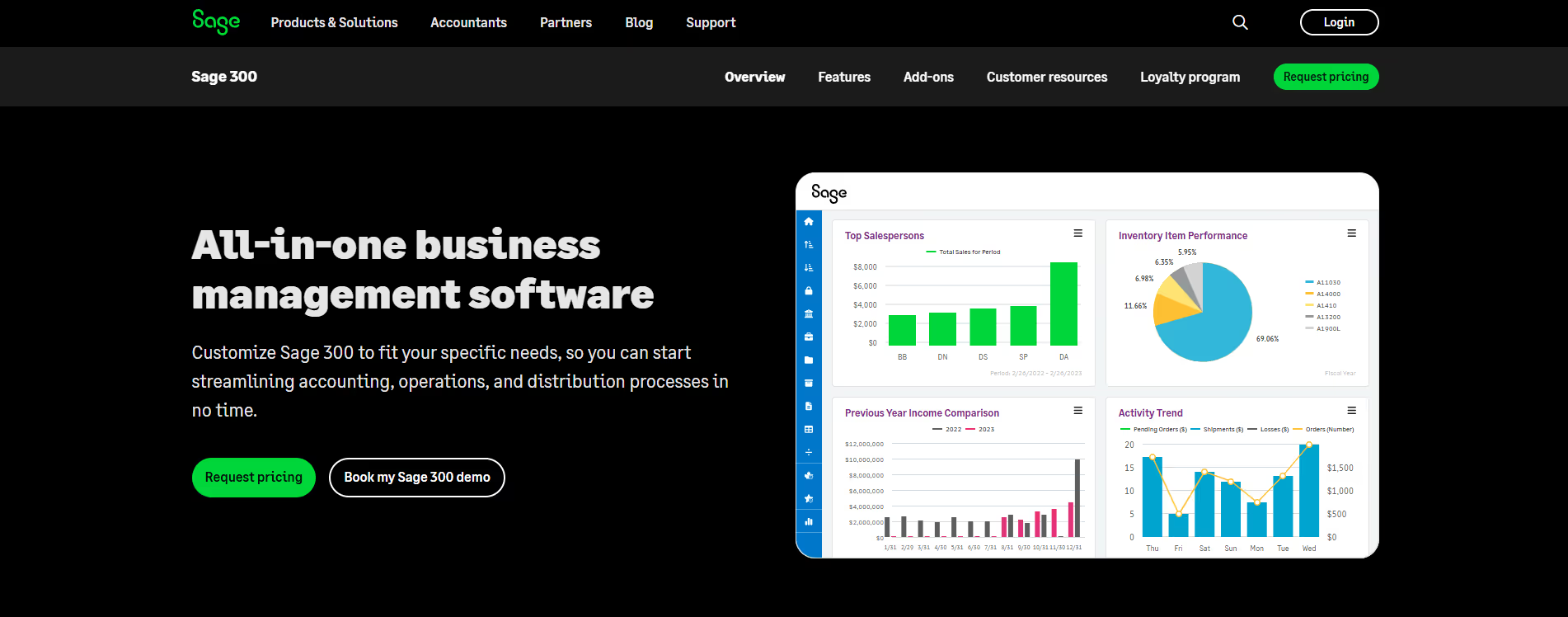Tool Insights
Home > Tools > Tool Details
Sage 300
Description
Comprehensive ERP solution for small to medium-sized businesses, offering robust financial, operational, and distribution management capabilities.
Sage 300 is an enterprise resource planning (ERP) software designed to help small and medium-sized businesses manage their financials, operations, and distribution processes. It offers a modular architecture, allowing businesses to customize their ERP solution by selecting the modules that best fit their needs. Sage 300 supports multiple languages and currencies, making it suitable for companies with global operations.
Key Applications
- Financial Management: Sage 300 offers robust tools for general ledger, accounts payable and receivable, cash management, and financial reporting, ensuring accurate and timely financial insights.
- Inventory Control: Efficiently manage stock levels, track inventory movements, and optimize supply chain processes with Sage 300's inventory control features.
- Project Management: Track and manage projects seamlessly, from resource allocation to budgeting, ensuring projects stay on schedule and within budget.
- Business Intelligence and Reporting: Access real-time data analytics and customizable reports to gain actionable insights into business performance, aiding informed decision-making.
- Multi-Currency and Multi-Language Support: Ideal for global businesses, Sage 300 allows transactions in multiple currencies and supports various languages.
- Sales Order Management: Manage transactions throughout the sales cycle, and automate your purchase order procedures directly in Sage 300.
Who It’s For
Sage 300 is designed for small to medium-sized businesses, particularly those in professional services, financial services, public sector, distribution, and wholesale industries. It's suitable for companies with multiple entities and locations, offering features to close books and report results by company or consolidated company
Pros & Cons
How It Compares
- Vs. Sage Intacct: Sage Intacct offers cloud-native flexibility and scalability, while Sage 300 provides robust on-premise ERP capabilities tailored to specific business needs.
- Vs. Microsoft Dynamics 365: Microsoft Dynamics 365 offers a broader suite of applications, including CRM and AI capabilities, whereas Sage 300 focuses more on financial and operational management for small to medium-sized businesses.
- Vs. QuickBooks Enterprise: QuickBooks Enterprise is more suited for smaller businesses with simpler needs, while Sage 300 offers a comprehensive ERP solution for businesses requiring advanced financial and operational management features.
Bullet Point Features
- Robust financial management tools for accurate and timely financial insights.
- Efficient inventory control features to optimize supply chain processes.
- Seamless project management capabilities to ensure projects stay on schedule and within budget.
- Real-time data analytics and customizable reports for informed decision-making.
- Multi-currency and multi-language support for global businesses.
- Sales order management to automate purchase order procedures.
- Integration with Outlook for easy access and management of contacts.
Disclosure
All product names, logos and brands are property of their respective owners. Use is for educational and informational purposes only and does not imply endorsement. Links are to third-party sites not affiliated with Barndoor AI. Please see our Terms & Conditions for additional information.



.avif)




